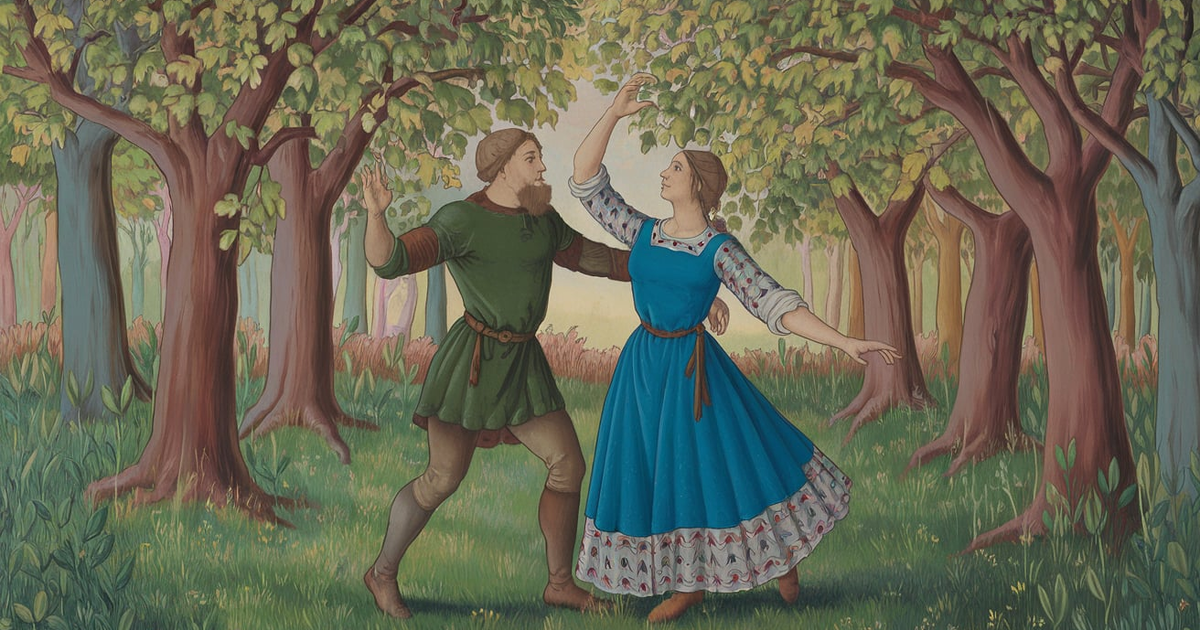Dance has been an artwork form, a social pastime, and a cultural expression for hundreds of years. But have you ever ever wondered how this art impacted style—or vice versa? The 14th century marked a fascinating record bankruptcy in which dance and apparel were intricately entwined. It explores the evolution of dance apparel at some stage in the 14th century, losing light on the social context, substances, craftsmanship, and patterns that defined this era. We’ll also touch on how elements of this historic fashion hold to influence what we wear nowadays.
Table of Contents
The 14th Century: Setting the Stage for Dance
To understand the dance clothing of the 14th century, it’s essential to recall the historical and cultural backdrop. It becomes a time of large transformation throughout Europe. The Middle Ages witnessed the boom of courtly lifestyles, in which the Aristocracy placed exquisite emphasis on artwork, music, and dance. These elegant types of amusement have become hallmarks of class.
Social stratification became outstanding in this era, and garb selections were among the clearest signs of repute. The rich embellished themselves in high-priced materials, which included silk and Velvet, even as the decreased training generally wore wool and Linen. Dance was no longer the most effective hobby; it was additionally a way to show wealth and social connections. This emphasis on reputation substantially influenced the styles and substances utilized in dance apparel.
Religious influence became every other fundamental aspect shaping 14th-century dance. Both sacred and secular dances performed a function in medieval existence, and this dichotomy brought variety to the corresponding apparel.
The Dance of the Middle Ages
During the 14th century, dances ranged extensively in fashion and motive. Here are some prominent sorts:
Court Dances
Often done inside the castles and halls of the Aristocracy, courtroom dances like the basse dance (a gradual, stylish dance) required sleek moves. Clothing for these activities centred on showcasing wealth and refinement. Women wore long gowns with geared-up bodices, and at the same time, guys usually donned tunics and tight-fitting hoses.
Folk Dances
Folk dances had been more commonplace for a number of the peasantry. These dances had been lively, communal, and frequently connected to seasonal celebrations or agricultural traditions. Though simpler than court wear, the clothing for folk dancers allowed freedom of movement. Woollen tunics and robust skirts were the norms.
Religious Dances
Religious dances had been finished all through festivals, processions, or church offerings. These dances frequently required modest attire, reflecting the solemnity of their cause. Simple robes or cloaks were worn, often decorated with symbols denoting faith.
Each type of dance has unique demands on the attire, influencing fabric preference, health, and embellishment.
Materials and Construction of Dance Apparel
The substances and construction of 14th-century clothing reveal a terrific deal about societal priorities and technological improvements.
Fabrics and Textures
- Silk and Velvet were reserved for the Aristocracy due to their price and tender, highly-priced appearance.
- Wool and Linen were staples for running-class clothes, prized for their sturdiness and practicality.
- Cotton commenced making its way into Europe, though it was still pricey and not widely used.
Colours
The colourations of dance clothing often had symbolic meanings. Vibrant colourations like deep reds, royal blues, and golds denoted wealth and prestige, as they required highly-priced dyes. Meanwhile, earth tones were extra common in some of the decreased instructions, as they were simpler to provide.
Craftsmanship and Guilds
Tailoring and embroidery had been meticulous at some point in the 14th century. Guilds played a large role in ensuring first-class artistry. Intricate embroidery and embellishments like pearls and gold thread had been commonplace in excessive-style dancewear.
The production of garments additionally reflected the movement necessities of dances. Skirts had often been cut with extra panels to permit twirling, while outfitted bodices supported posture and beauty.
Fashion Trends in Dancewear
Women’s Dancewear
For girls, lengthy, flowing robes were the epitome of dance fashion. The fitted bodice and extensive skirts flattered the figure and imparted the necessary freedom of motion for gliding or spinning. Sleeves often featured decorative flares, and intricate headdresses expanded the beauty of the ensemble.
Men’s Dancewear
Men’s attire protected tunics, tight-fitting hose, and regularly brief cloaks for formal dances. Belts and sashes have been commonplace add-ons, signalling each popularity and style.
Regional Variations
Dancewear styles are numerous across areas, encouraged by local customs and available resources. Italian dancewear, for instance, leaned closer to vibrant and dramatic aesthetics, while English clothes had been more understated and functional.
The social occasion additionally dictated attire. A royal ball demanded opulence, while a joyful village celebration was referred to as practicality.
Influences on Modern Fashion
The legacy of 14th-century dance apparel is ways-reaching, with several elements nonetheless influencing contemporary style:
- Flared and Flowing Skirts seen in modern robes and dresses trace lower back to the panels utilized in medieval dancewear for movement.
- High-waisted Silhouettes mirror the outfitted bodices of medieval times.
- Rich textures and embellishments, like Velvet and embroidery, keep the appearance formal.
Even in casual style, we see echoes of the beyond. For example, tunic-fashion tops and belted clothes have their roots in medieval design.
Beyond aesthetics, the 14th century reminds us how garb can merge function with expression. It evokes today’s designers to consider each motion and meaning in their creations.
Appreciating the Legacy of 14th-Century Dancewear
Dance apparel from the 14th century offers a charming glimpse into the intersection of artwork, culture, and style. It shows how humans express their identities and values through motion and attire.
The enduring legacy of those clothes reminds us of the strength of history to form our gift-day aesthetics. Understanding this history deepens our appreciation of modern style and connects us to a rich cultural heritage.
If you’re intrigued by the evolution of style and want to study more, test out our devoted series on ancient clothing and dance. Have any questions about 14th-century dancewear? Share them in the comments—we’d like to hear from you!

